The Mayan civilization, one of the most enigmatic and ancient civilizations in the world, left behind a rich tapestry of mythology and legends. At the heart of their belief system lies the Mayan underworld, a mysterious realm inhabited by mythical beings and supernatural forces. In this article, we will journey into the depths of the Mayan underworld and explore the fascinating creatures and rituals that defined their understanding of the afterlife. From the creation myth to the guardians of the dark realm, from specters and wandering souls to the geography and rituals of the underworld, we will unravel the intricate web of Mayan mythology. Join us as we delve into this captivating world, filled with awe-inspiring tales and enduring mysteries.
Contents
- The Creation Myth
- Supernatural Guardians
- Specters and Wandering Souls
- Underworld Geography and Rituals
- The Mayan Underworld Today
- Conclusion
-
Frequently Asked Questions
- What is the significance of the Mayan creation myth?
- Who are the key gods in the Mayan creation myth?
- How did the gods create humans in the Mayan creation myth?
- What is the Mayan underworld?
- Who are the enigmatic lords of Xibalba?
- Who are the hero twins in Mayan mythology?
- What are the cihuateteo in Mayan mythology?
- What are some supernatural creatures found in the Mayan underworld?
- What are the sacred cenotes in Mayan mythology?
- How has Mayan mythology influenced modern culture?
- References
-
Frequently Asked Questions
- 1. Who were the main gods in the Mayan underworld?
- 2. What is the significance of Xibalba, the dark realm?
- 3. Who were the Hero Twins and how did they defend the living?
- 4. What are the Cihuateteo and why are they haunting?
- 5. What are some other mythical beings in the Mayan underworld?
- 6. What role did rivers of blood and sacred cenotes play in the Mayan underworld?
- 7. How did the Mayans honor the underworld deities through rituals and beliefs?
- 8. How have mythical legends survived to this day?
- 9. How are the Mayan mythological beings interpreted in modern culture?
- 10. What can we learn from the Mayan underworld mythology?
- References
- Read More
The Creation Myth
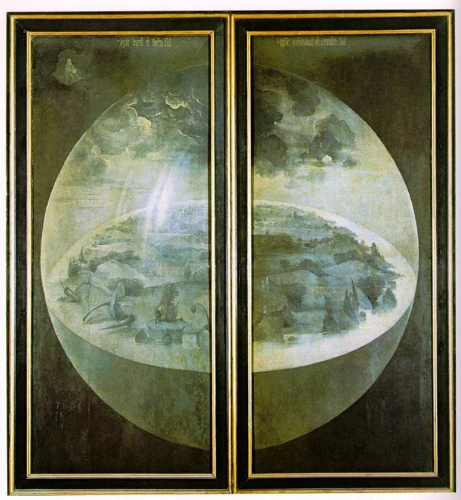
According to the Mayan creation myth, the world as we know it was brought into existence through a series of divine acts. In the beginning, there was only darkness and silence, until the dual deity known as Huracan, or “One-Legged God,” emerged from the depths of the primordial sea. With a powerful whirlwind, Huracan separated the waters, creating the earth. Alongside Huracan, other gods like Itzamna and Ix Chel played vital roles in the creation process. Itzamna, the supreme god, shaped the landscape and established order, while Ix Chel, the moon goddess, governed important aspects of fertility and childbirth. Together, these deities formed the foundation of the Mayan universe. As the myth goes, the gods fashioned the first humans out of maize dough, an essential crop in Mayan culture. This act not only gave life to humans but also symbolized the spiritual connection between the people and the gods. The creation myth served as a cornerstone in Mayan cosmology, providing an explanation for the origins of life and setting the stage for the complex web of deities and mythical beings found in the Mayan underworld.
Link: Characteristics and Traits of Zodiac Signs
The Birth of the Underworld
The birth of the underworld in Mayan mythology is a fascinating tale that sheds light on the origins of this mysterious realm. According to the ancient belief system, the underworld, known as Xibalba, was formed when the gods created the first humans. These primeval humans, however, lacked the ability to worship the gods properly and failed to provide them with the necessary offerings. This angered the gods, who decided to banish the humans to the underworld and create a new race. To bring this plan into fruition, the gods decided to craft the new humans from wood. These wooden humans, called “pochtecas,” were given life but lacked intelligence and free will. Dissatisfied with this creation, the gods decided to destroy them and try again. This time, they fashioned the next race of humans from maize dough, imbuing them with intelligence, self-awareness, and the capacity for devotion. With the successful creation of these maize humans, the gods placed them in the world of the living, while the wooden pochtecas were banished to the underworld, becoming the first denizens of Xibalba. This birth of the underworld serves as a reminder of the importance of reverence and worship in the Mayan civilization, as well as the consequences of failing to fulfill one’s spiritual duties.
Link: Threat of Near-Earth Asteroids and Planetary Defense Strategies
The Role of the Gods
In Mayan mythology, the gods played a crucial role in the order and functioning of the universe, including the Mayan underworld. Each god had their own specific domain and responsibilities, often associated with natural phenomena or aspects of human existence. One of the most prominent gods in Mayan mythology was Itzamna, the supreme ruler and creator deity. Itzamna was believed to be the god of the sky, day, and night, as well as writing and knowledge. Another significant deity was Ix Chel, the goddess of the moon, fertility, and childbirth. Ix Chel was often depicted as a young woman holding a rabbit, symbolizing fertility and the lunar cycle. Other important gods included Chaac, the god of rain and agriculture, and Kukulkan, the feathered serpent deity associated with wind and wisdom. These gods were not only revered but also feared, as they had the power to shape the destiny of the Mayan people. The gods were believed to communicate with humans through various means, such as dreams, visions, and the interpretation of natural signs. Mayans offered prayers, sacrifices, and performed rituals to appease the gods and seek their guidance and protection. The role of the gods in Mayan mythology emphasized the interconnectedness between the celestial, natural, and human realms, creating a complex cosmology that influenced every aspect of Mayan life.
Link: Mysterious Origins of the Inca Civilization
Supernatural Guardians
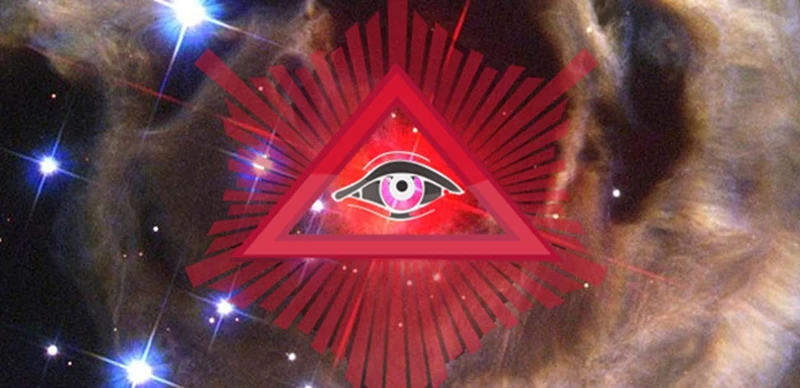
In the Mayan underworld, known as Xibalba, a realm of darkness and terror awaited those who passed away. It was the role of supernatural guardians to oversee and protect this realm, ensuring the order and balance of the underworld. The most prominent among these guardians were the enigmatic lords of Xibalba, who held dominion over various aspects of the afterlife. There were twelve lords in total, each representing different types of death, such as death by jaguar, bat, or snake. These lords were feared and respected by both the living and the dead, as they possessed immense power and knowledge of the spiritual realm. The dark lords of Xibalba were known for their cunning and trickery, often setting up elaborate tests and challenges to torment the souls who entered their domain. However, not all beings in the underworld were malevolent. The Hero Twins, Hunahpu and Xbalanque, were renowned for their bravery and prowess in defending the living from the forces of Xibalba. They were seen as the ultimate protectors, using their wit and strength to outsmart the lords of the underworld and ensure the survival of humanity. The supernatural guardians of the Mayan underworld thus played a crucial role in maintaining the equilibrium between life and death, embodying both the benevolent and malevolent aspects of the afterlife.
Xibalba: The Dark Realm
Xibalba, often referred to as “The Dark Realm,” is the Mayan underworld, a place of great significance in Mayan mythology. It is believed to be a treacherous and gloomy realm, home to various deities and mythical beings. In Xibalba, there are nine levels, each presenting different challenges and tests for the souls that enter. At the entrance to Xibalba, there is a deep underground river called the “River of Blood,” which must be crossed by the deceased to reach the afterlife. The river’s crimson color symbolizes the sacrifices made to the gods in the Mayan rituals. As one descends through the levels, the challenges become increasingly difficult and dangerous. The rulers of Xibalba, the enigmatic Lords, are the main figures in this realm. They are known for their cunning and trickery, often subjecting the souls to elaborate traps and tests. Some of the prominent Lords of Xibalba include Hun-Came, the god of death, and Vucub-Came, the underworld ruler. These powerful beings have a significant influence on the living world and play pivotal roles in Mayan cosmology. Despite the dark and foreboding nature of Xibalba, there are also legends of hero twins, Hunahpu and Xbalanque, who successfully navigated the trials and defeated the Lords of Xibalba. They serve as protectors of the living and provide hope in the face of darkness.
Link: Threat of Near-Earth Asteroids and Planetary Defense Strategies
The Enigmatic Lords of Xibalba
In the depths of the Mayan underworld, a realm known as Xibalba, ruled by enigmatic lords, held great power and fear. These underworld deities were known for their cunning and ability to inflict suffering on the living. One of the most feared lords was Hun-Came, the Lord of Death. He was often depicted as a skeleton or a decaying corpse, representing the inevitability of death. Another prominent lord was Vucub-Came, the Lord of the Underworld, who embodied darkness and decay. He was associated with diseases and the decay of the natural world. These lords, with their intimidating and awe-inspiring presence, were believed to control the fate of souls in the afterlife. Descending into Xibalba was no easy task, as the lords set up traps and obstacles to test the courage and resilience of those who dared to venture into their domain. Only the most exceptional heroes, such as the Hero Twins, could navigate the treacherous paths of Xibalba and challenge the ruling lords. Through their tales and encounters with the enigmatic lords of Xibalba, the Mayans explored the themes of mortality, heroism, and the eternal struggle between good and evil. The legends of these lords continue to intrigue and captivate us today, offering a glimpse into the complex belief system of the Mayan civilization.
The Hero Twins: Defenders of the Living
The Hero Twins, also known as Hunahpu and Xbalanque, were central figures in Mayan mythology and played a crucial role as defenders of the living against the forces of the underworld. Born to the noble couple Hun-Hunahpu and Xquic, the twins possessed extraordinary abilities and were destined for greatness. However, their path was not without challenges. In the Mayan underworld, known as Xibalba, the rulers of the dark realm, One Death and Seven Death, devised a series of trials to test the strength and cunning of the twins. Through their courage and cleverness, the Hero Twins triumphed over these trials, overcoming deadly pits, treacherous roads, and magical illusions. In their final triumph, the twins managed to outwit the sinister Xibalba lords in a deadly ballgame, a game of immense cultural significance for the Mayans. Their victory not only secured their place among the gods but also ensured the well-being and protection of the living. The Hero Twins became legendary figures, revered as powerful deities and symbols of resilience and triumph over adversity. Their story continues to be celebrated in Mayan art and folklore, serving as a reminder of the indomitable human spirit and the eternal battle between light and darkness.
Specters and Wandering Souls
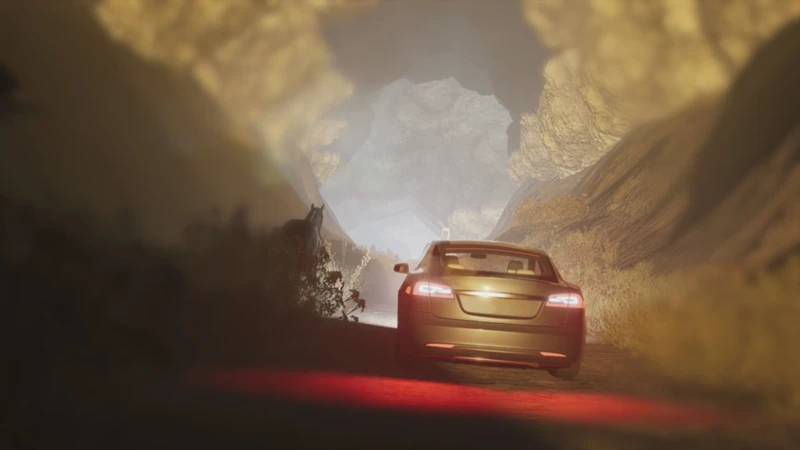
In the Mayan underworld, specters and wandering souls roam the dark realms, embodying the mystical and supernatural aspects of the afterlife. Among these beings are demons and demigods, restless spirits with extraordinary powers. These entities often served as guides, helping or hindering the souls of the deceased on their journey through the underworld. The Cihuateteo, a group of haunting female spirits, were believed to be women who died during childbirth and possessed great influence over life and death. These spirits were both revered and feared, as they were associated with both fertility and disease. Another significant figure in Mayan mythology is the ghost jaguar, a shape-shifting creature capable of taking on human form. These elusive beings were seen as guardians of the sacred underworld and were associated with hunting and warfare. Serpents also held a prominent place in Mayan beliefs, with tales of shape-shifting serpents who could move between the realms of the living and the dead. These supernatural beings imbued the Mayan underworld with a sense of mystery and wonder, adding to the complex tapestry of Mayan mythology.
Demons and Demigods
Demons and demigods played a significant role in Mayan mythology, particularly in relation to the underworld. These supernatural beings were often associated with malevolent forces and served as guardians or tormentors of the souls in the afterlife. One prominent Mayan demon was Ah Puch, also known as the God of Death. Ah Puch was depicted as a skeletal figure, covered in decaying flesh, and adorned with hunting tools. He was responsible for ruling over Metnal, one of the nine levels of Xibalba. Alongside Ah Puch, there were other malevolent entities such as Camazotz, the monstrous bat god, who was believed to snatch the souls of the living. On the other hand, there were also demigods, like Hunahpu and Xbalanque, the renowned Hero Twins, who were instrumental in defeating the lords of Xibalba and triumphing over the forces of darkness. These mythical characters were both admired and feared, as they possessed extraordinary powers and represented the eternal struggle between good and evil. The belief in demons and demigods added depth and complexity to the Mayan underworld, illustrating the intricate interplay of supernatural forces within their mythology.
The Haunting Cihuateteo
The Cihuateteo, also known as “the women who have died in childbirth,” were haunting figures in Mayan mythology. According to legend, these supernatural beings were the spirits of women who died during childbirth. In the Mayan belief system, these women were believed to have a special connection to the underworld, as they had crossed the threshold between life and death in the act of giving birth. The Cihuateteo were considered to be powerful and vengeful beings, capable of causing illness and misfortune if not appeased. They were depicted with skeletal bodies, disheveled hair, and jaguar attire, symbolizing their connection to the realms of both the living and the dead. To honor and pacify the Cihuateteo, the Mayans would perform rituals and offer sacrifices to the departed spirits. These rituals were carried out by shaman-like figures known as “Nacom” who acted as intermediaries between the physical world and the underworld. The haunting presence of the Cihuateteo serves as a reminder of the interconnectedness between life, death, and the supernatural in Mayan culture and underscores the importance of honoring and respecting the spirits of those who have passed on.
Ghost Jaguars and Shape-Shifting Serpents
In the Mayan underworld, there exist various supernatural beings with the ability to transform and take on different forms. Among them are the ghost jaguars and shape-shifting serpents, which are often associated with power, mystery, and danger. Ghost jaguars are believed to be the spirits of deceased jaguars, roaming the underworld with an aura of darkness and stealth. These spectral creatures are known for their ability to possess and influence living beings, causing illness or misfortune. They are portrayed as both protectors and punishers, offering spiritual guidance to some and striking fear into the hearts of others. On the other hand, shape-shifting serpents, known as “Kukulcan,” are revered as divine entities. They possess the mesmerizing ability to transform into different forms such as humans, birds, or even clouds. These serpents are seen as intermediaries between the human world and the divine realm, conveying messages and wisdom from the gods to the mortal realm. The imagery of ghost jaguars and shape-shifting serpents in Mayan mythology reflects the complex and mystical nature of the underworld, where beings of both light and darkness coexist, captivating the imagination of the Mayan people.
Link: Mysterious Origins of the Inca Civilization
Underworld Geography and Rituals
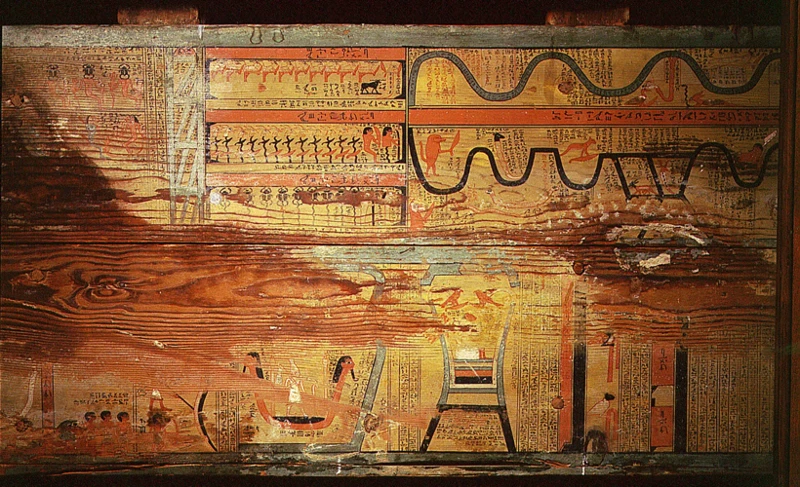
The Mayan underworld, known as Xibalba, was believed to be a vast and complex realm with its own geography and rituals. Xibalba was depicted as a dark and treacherous place, consisting of nine levels or chambers. Each level was guarded by a specific deity or supernatural force, presenting unique challenges for those who ventured into the underworld. The rivers of blood, such as the Xibalba Be, flowed through the various levels, representing the life force and the power of sacrifice.
To access the underworld, the Mayans believed in the existence of sacred cenotes, natural sinkholes filled with water, which were considered portals to Xibalba. These cenotes were revered as holy sites and served as locations for sacred rituals and offerings to the underworld deities. The Mayans would conduct ceremonies and sacrifices near the cenotes, using precious objects, such as jade, gold, and obsidian, to appease the lords of Xibalba and ensure the balance between the earthly realm and the underworld.
Rituals played a crucial role in Mayan culture, as they were seen as a means of communication with the gods and were often performed to honor deceased ancestors. The journey to the afterlife was a significant aspect of Mayan belief, and rituals were conducted to guide the souls of the deceased safely through the underworld and into the realm of the gods. These rituals involved the burning of incense, the consumption of hallucinogenic substances like balché, and the use of bloodletting, where self-inflicted wounds were made to offer blood as a spiritual offering.
The Mayans believed in the cyclical nature of life and death, and through their rituals and offerings, they sought to maintain the harmony between the earthly realm and the underworld. By understanding the geography and performing the appropriate rituals, the Mayans believed they could navigate the complex and mystical realm of Xibalba and ensure the protection and guidance of the gods.
HTML List Format:
- The Mayan underworld, Xibalba, consisted of nine levels or chambers
- Sacred cenotes served as portals to the underworld
- Rivers of blood like Xibalba Be flowed through the underworld
- Sacred rituals and offerings were conducted near the cenotes
- Rituals played a crucial role in guiding souls to the afterlife
- Incense, hallucinogens, and bloodletting were part of Mayan rituals
- Rituals aimed to maintain harmony between realms and honor ancestors
Rivers of Blood and the Sacred Cenotes
The Mayan underworld was believed to be a vast and intricate realm, and its geography played a significant role in their mythology and rituals. One of the most prominent features of the underworld was the concept of “rivers of blood.” These rivers, flowing through the dark realm of Xibalba, symbolized the life force and the sacrifices made by the gods. The blood was seen as a vital offering to sustain the balance between the mortal realm and the underworld. Additionally, the Mayans held a deep reverence for cenotes, natural sinkholes filled with freshwater that were connected to the underworld. These cenotes were considered to be sacred portals connecting the earthly realm to the depths of Xibalba. The Mayans believed that the cenotes were entrances to the underworld, allowing interaction between the mortal world and the domain of the gods. These sacred bodies of water were often used for rituals, as well as for offerings to the deities of the underworld. The Mayans would present precious objects, such as jade and gold, as well as food and other offerings, in hopes of appeasing the gods and seeking their protection and favor. The combination of the rivers of blood and the sacred cenotes created a tangible link between the mortal realm and the mystical underworld, shaping the religious practices and beliefs of the Mayans.
Sacred Offerings to the Underworld Deities
Sacred offerings played a fundamental role in Mayan rituals and ceremonies dedicated to the underworld deities. These offerings were made to appease and honor the powerful beings that dwelled in the depths of Xibalba. The type of offerings varied depending on the specific deity being honored, but common items included food, beverages, and symbolic representations of modern website design. Fruits, vegetables, corn, and honey were among the food offerings, while chocolate and fermented beverages like balché and pulque were often used for libations. Additionally, blood offerings, usually from animals such as deer or turkeys, symbolized the sacredness of life and were believed to provide sustenance for the gods. These offerings were made in sacred places such as caves, cenotes (natural sinkholes), and ceremonial centers. The Mayans believed that by offering these gifts, they could establish a reciprocal relationship with the underworld deities and gain their protection and favor. The rituals surrounding these offerings were highly complex and required the participation of priests and shamans who acted as intermediaries between the mortal world and the realm of the gods.
The Journey to the Afterlife: Rituals and Beliefs
The Mayan belief in the afterlife was deeply rooted in their rituals and beliefs. They believed that the journey to the afterlife was a complex and perilous one, requiring careful preparation and adherence to specific rituals. One of the most significant rituals was the creation of cenotes, natural sinkholes considered to be sacred portals to the underworld. These cenotes were believed to be the dwelling places of powerful deities, and offerings of precious artifacts, food, and even human sacrifices were made to appease them. The Mayans also believed in the existence of a river of blood that flowed through the underworld, and it was essential for the deceased to successfully navigate this river to reach their final destination. To aid the deceased in their journey, burial sites were often adorned with grave goods, including pottery, jade jewelry, and weapons. These offerings were believed to assist the deceased in their passage through the underworld and ensure a favorable afterlife. The rituals and beliefs surrounding the journey to the afterlife were central to Mayan culture and influenced various aspects of their daily lives.
The Mayan Underworld Today
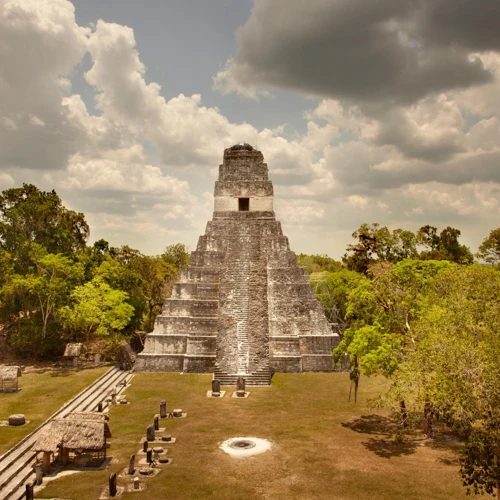
The rich mythology and beliefs of the Mayan underworld still resonate today, both in surviving legends and in modern interpretations. While the Mayan civilization declined centuries ago, the legacy of their underworld lives on in the rituals and traditions of indigenous communities in Mexico and Central America. The Mayan underworld, known as Xibalba, continues to be a powerful symbol in these cultures, representing a spiritual realm filled with ancient wisdom and ancestral connections. Today, there are still ceremonies and offerings made to the deities of the underworld, seeking protection and guidance. These rituals often take place near sacred cenotes, natural sinkholes that were believed to be gateways to the underworld. Despite the passage of time, the reverence for the underworld and the mythical beings associated with it remains alive, connecting modern communities to their ancient Mayan roots. Beyond indigenous cultures, the allure of the Mayan underworld can also be seen in popular culture. Books, movies, and video games often draw inspiration from Mayan mythology, weaving narratives that incorporate the enigmatic creatures and realms of the underworld. The enduring fascination with the Mayan underworld today is a testament to the enduring power of these ancient mythological beliefs.
Link: The Mysterious Origins of the Inca Civilization
Surviving Mythical Legends
Surviving Mythical Legends:
Despite the passage of time, the mythical legends and creatures of the Mayan underworld continue to resonate within modern culture and belief systems. One such legendary figure is the deity Kukulkan, also known as Quetzalcoatl, the feathered serpent god. Kukulkan was revered by the ancient Mayans and is still celebrated today by indigenous communities in Mesoamerica. Many believe that sightings of giant serpents in the jungles of Mexico and Central America are associated with this benevolent deity. Another enduring legend is that of the Hero Twins, Hunahpu and Xbalanque, who bravely defeated the Lords of Xibalba in a series of trials and emerged as champions of the living. Their story serves as a testament to the triumph of good over evil and continues to inspire resilience and courage in the face of adversity. Additionally, the Cihuateteo, a group of female spirits who died in childbirth, are still believed to haunt certain areas, especially during the sacred month of Miccailhuitontli. These spirits serve as a reminder of the importance of fertility and the interconnectedness of life and death. Through these surviving mythical legends, the ancient Mayan beliefs and traditions have endured and continue to shape the cultural landscape of the region.
Link: Mysterious Origins of the Inca Civilization
Modern Interpretations and Popular Culture
Modern interpretations and popular culture have embraced and reimagined the mythical beings of the Mayan underworld, bringing them into various forms of media and entertainment. One prominent example is the popular video game series “Shadow of the Tomb Raider,” where players follow the adventures of the iconic character Lara Croft as she uncovers Mayan artifacts and confronts the challenges of the underworld. The game beautifully portrays the eerie atmosphere and intricate mythology of the Mayan underworld, drawing inspiration from the architecture, legends, and even the enigmatic Lords of Xibalba. Alongside video games, Mayan mythology has also found its way into novels, films, and artwork. Authors have incorporated Mayan underworld themes into their stories, captivating readers with tales of brave heroes and treacherous realms. Artists have depicted the iconic characters and creatures of the Mayan underworld in stunning illustrations, showcasing their diverse and awe-inspiring nature. The continued presence of Mayan mythology in popular culture serves as a testament to the enduring fascination with these mythical beings, allowing new generations to appreciate and engage with the rich tapestry of the Mayan underworld.
Link: Mysterious Origins of the Inca Civilization
Conclusion
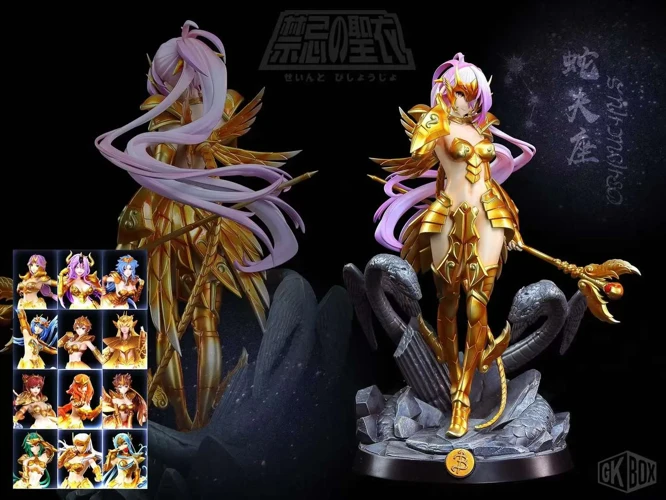
In conclusion, exploring the Mayan underworld and its mythical beings offers a captivating glimpse into the rich tapestry of Mayan mythology. The creation myth provides insights into the foundations of their belief system and the origins of life. The supernatural guardians of Xibalba, such as the enigmatic Lords and the heroic Twins, showcase the struggles between good and evil, light and darkness. The specters and wandering souls reveal the Mayans’ fascination with the afterlife and their complex views on death. The geography and rituals associated with the underworld illustrate the significance of rivers of blood and sacred cenotes in their religious practices. Today, surviving mythical legends continue to inspire awe and curiosity, while modern interpretations in popular culture keep the Mayan underworld alive in the hearts and minds of people worldwide. The Mayan civilization’s mythology and their captivating underworld remain a testament to the intricacies of their culture and the enduring power of human imagination.
Frequently Asked Questions

What is the significance of the Mayan creation myth?
The Mayan creation myth holds great significance as it lays the foundation for their understanding of the origins of life and the universe. It provides insights into their belief system, their relationship with the gods, and the spiritual connection between humans and the divine.
Who are the key gods in the Mayan creation myth?
The key gods in the Mayan creation myth include Huracan, the One-Legged God who brought forth the earth, Itzamna, the supreme god who established order, and Ix Chel, the moon goddess associated with fertility. These deities played essential roles in shaping the world and governing different aspects of nature.
How did the gods create humans in the Mayan creation myth?
According to the myth, the gods crafted the first humans out of maize dough, a staple crop in Mayan culture. This act symbolized the interconnection between humans and the gods and emphasized the importance of agriculture and sustenance in Mayan society.
What is the Mayan underworld?
The Mayan underworld, known as Xibalba, is a dark and mysterious realm that is believed to be the dwelling place of supernatural entities and deceased souls. It is a parallel world to the living and represents the afterlife in Mayan mythology.
Who are the enigmatic lords of Xibalba?
The enigmatic lords of Xibalba are powerful and sinister beings who rule over the Mayan underworld. They are known for their cunning and often set traps and challenges for humans and mythical heroes who venture into their realm.
Who are the hero twins in Mayan mythology?
The hero twins, Hunahpu and Xbalanque, are revered figures in Mayan mythology. They were born to a virgin mother and embarking on a heroic journey to Xibalba. Through their bravery and cleverness, they overcame the obstacles set by the underworld lords and brought them down, becoming symbols of resilience and triumph.
What are the cihuateteo in Mayan mythology?
The cihuateteo are haunting female spirits in Mayan mythology. They are often associated with childbirth and are believed to have the power to interfere with the lives of humans. They are both feared and respected for their supernatural abilities.
What are some supernatural creatures found in the Mayan underworld?
The Mayan underworld is home to a variety of supernatural creatures, including demonic beings, demigods, ghost jaguars, and shape-shifting serpents. These entities often serve as guardians or agents of the lords of Xibalba and can pose great threats to those who traverse the underworld.
What are the sacred cenotes in Mayan mythology?
The sacred cenotes are natural sinkholes filled with water that were considered sacred in Mayan mythology. They were believed to be portals to the underworld and were used for ritual purposes, including offerings to the underworld deities.
How has Mayan mythology influenced modern culture?
Mayan mythology continues to captivate and inspire people around the world. Its influence can be seen in various forms of art, literature, and entertainment, including movies, video games, and literature. Modern interpretations of Mayan mythology often aim to bring these ancient tales to a broader audience and keep the myths alive.
References
- Who are all the lords of Xibalba in Mayan mythology?
- Journey into the Maya underworld
- Xibalba – The Mayan Underworld
Frequently Asked Questions

1. Who were the main gods in the Mayan underworld?
The main gods in the Mayan underworld were Xibalba and the enigmatic Lords of Xibalba. These powerful deities played vital roles in the mythological beliefs of the Mayan civilization.
2. What is the significance of Xibalba, the dark realm?
Xibalba was believed to be the dark, mysterious realm of the Mayan underworld. It was considered the realm of the dead, a place where souls would journey after death and face various challenges and tests before reaching the final resting place.
3. Who were the Hero Twins and how did they defend the living?
The Hero Twins, Hunahpu and Xbalanque, were legendary figures in Mayan mythology. They were the defenders of the living and represented the triumph of good over evil. They ventured into Xibalba to defeat the evil lords and restore balance to the world.
4. What are the Cihuateteo and why are they haunting?
The Cihuateteo were female supernatural beings in the Mayan underworld. They were the spirits of women who died during childbirth and were believed to roam the earth as haunting entities. Their presence was considered both mysterious and haunting.
5. What are some other mythical beings in the Mayan underworld?
In addition to the gods and heroes, the Mayan underworld was believed to be populated by demons, demigods, ghost jaguars, and shape-shifting serpents. These beings added to the mystical and diverse nature of the underworld.
6. What role did rivers of blood and sacred cenotes play in the Mayan underworld?
Rivers of blood and sacred cenotes held great significance in Mayan mythology. They were seen as portals to the underworld and were used for sacred rituals and offerings to appease the deities of the underworld.
7. How did the Mayans honor the underworld deities through rituals and beliefs?
The Mayans honored the underworld deities through various rituals and beliefs. They conducted ceremonies and made offerings to ensure the favor and protection of the gods. These practices were deeply ingrained in Mayan culture and religious beliefs.
8. How have mythical legends survived to this day?
Mythical legends of the Mayan underworld have survived through oral traditions passed down through generations. Additionally, archaeological discoveries and scholarly research have helped preserve and understand the rich mythology of the Mayan civilization.
9. How are the Mayan mythological beings interpreted in modern culture?
Mayan mythological beings have been interpreted in various ways in modern culture. They have appeared in literature, artwork, and films, often presented as mystical and intriguing characters. Their influence continues to captivate the imagination of people worldwide.
10. What can we learn from the Mayan underworld mythology?
Mayan underworld mythology offers valuable insights into the beliefs, values, and worldview of the ancient Mayan civilization. It highlights the importance they placed on the afterlife, the struggle between good and evil, and the role of supernatural beings in their cosmology.







